The HTC One (M8) Review
by Anand Lal Shimpi & Joshua Ho on March 26, 2014 7:00 PM EST- Posted in
- Smartphones
- HTC
- Mobile
- HTC One
Camera Architecture & Duo Cam
The last HTC phone I used with two rear facing cameras was the EVO 3D. Thankfully the M8 One doesn’t fall victim to the 3D fad of the early 2010s. I remember seeing Intel demos years ago (think Moorestown timeframe) that showed a smartphone with two rear cameras, each with a different lens system, in order to computationally improve image quality. Unfortunately, the M8’s Duo Cam system doesn’t go that far either.
| HTC One Cameras | ||||
| HTC One (M7) | HTC One (M8) | |||
| Front Camera | 2.1MP | 5.0MP | ||
| Front Camera - Sensor | OV2722 (1.4µm, 1/5.8") |
S5K5E2 (1.12µm, 1/5") |
||
| Front Camera - Focal Length | 1.59mm | 1.83mm | ||
| Front Camera - Max Aperture | F/2.0 | F/2.0 | ||
| Rear Camera - Sensor | ST VD6869 (2.0 µm, 1/3") |
OV4688 (2.0 µm, 1/3") |
||
| Rear Camera - Focal Length | 3.82mm (28mm eff) | 3.82mm (28mm eff) | ||
| Rear Camera - Max Aperture | F/2.0 | F/2.0 | ||
| Secondary Rear Camera - Sensor | - | OV2722 (1.4µm, 1/5.8") |
||
The architecture is pretty simple. The primary shooter is still the 4MP UltraPixel camera from last year, without optical image stabilization (more on this later). The secondary sensor is actually the front facing camera module from the M7 (OmniVision OV2722, 1080p sensor with 1.4µm pixels).
Assuming you’re shooting in the right conditions, both sensors capture an image although only the image from the primary sensor is displayed. The second sensor captures what appears to be a wider field of view, as well as stores some depth information about the scene. This added data is stored outside of the normal address space for a JPEG file, and allegedly in a non-readable format (although my guess is with enough time you’d be able to extract the secondary image).
Images captured with Duo Cam enabled end up being around 60% larger than those shot with the rear sensor alone. Around 40% of the added file size is due to the secondary 1080p image, while the remaining 60% of the data is depth information.
HTC uses this depth information to enable a number of post processing effects that can be done on the One itself. Simply take a picture using the rear facing camera, tap edit, then effects and you’re presented with a list of all of the Duo Cam effects available on the One.
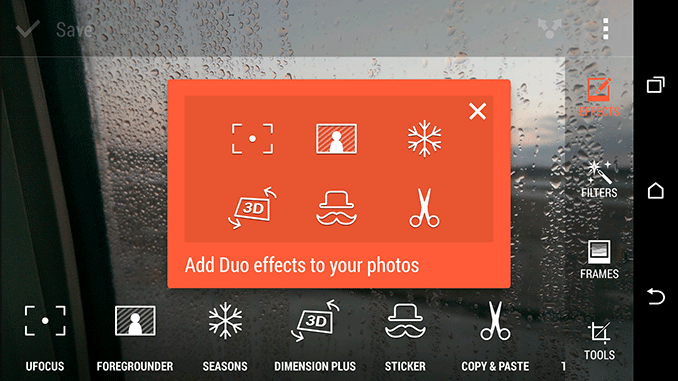
UFocus allows you to change the part of the scene in focus, either using the focus plane of the primary or secondary sensor. This isn’t completely open ended where you can selectively focus on anything in a scene. Instead, you’re basically toggling between focus captured by the primary or secondary sensor with the rest of the scene computationally put in/out of focus from what I can tell. In portraiture you end up with simulated bokeh, giving you heavily blurred backgrounds while keeping your subject in sharp focus. I was sitting across a table from Scott Wasson at a coffee shop and decided to snap a photo of him. Then I fired up UFocus, tapped on his face, and in about a second I had a processed result. I've embedded both images below, click on the buttons to toggle between the two images:

It’s an awesome effect, something that would take considerable time in post normally (not to mention time on a PC). You’ll notice the effect isn’t perfect though. Pay attention to the top of his left shoulder (on the right side of the image). There are clearly some difficulties determining boundaries between foreground and background. Scott then turned the camera on me. With my back to a scene with more depth enabling UFocus around took much longer to process, a matter of a few seconds. The result was even more impressive:

Here I’m clearly separated from the background. You can see some of the limitations of UFocus here as I’m not the only subject in focus. The table to my right is also in focus. It’s still impressive, and something that would be very difficult to do with manual editing (without multiple exposures).
UFocus is easily one of the most compelling applications for the Duo Cam. There’s no real flexibility with the feature though. Moving focus to the background is basically useless. And you can forget about using UFocus for anything other than a portrait. In most other scenes you end up with awkward focus boundaries.
Foregrounder is a pretty neat effect. Similar to UFocus you select a subject to be the focal point, but instead of blurring the rest of the scene HTC uses the depth information to apply shading effects to the rest of the scene. The result can be pretty dramatic if you’re shooting the right scene.
I came across this burrito shop in downtown San Jose, home of the Burritozilla:
The scene itself made for a great photo, but have a look at what happens when I use HTC’s Duo Cam to select the sign and apply an effect to everything physically behind it:

In the right scene the effect can be pretty cool.
Seasons is a bit cheesier although I can see it being quite popular with some folks. Here HTC uses the depth information as well as the image from the second sensor to create a panning effect through a scene while computationally adding in some element of a season (e.g. falling leaves or oversized snowflakes). The effect is best shown off in a video:
Dimension Plus uses the second sensor to enable a parallax effect on a given scene, allowing you to tilt the One in any direction to manipulate the effect. Unlike the other effects, this one can’t be easily exported to a video or other commonly used file format.
Stickers let you apply props to an image:
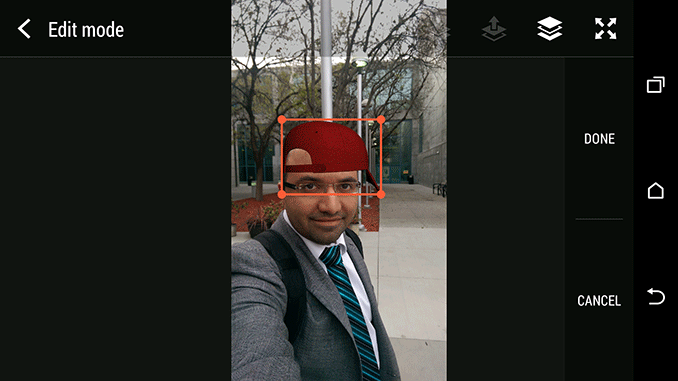

 |
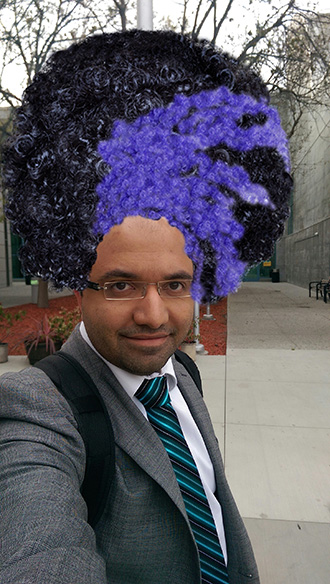 |
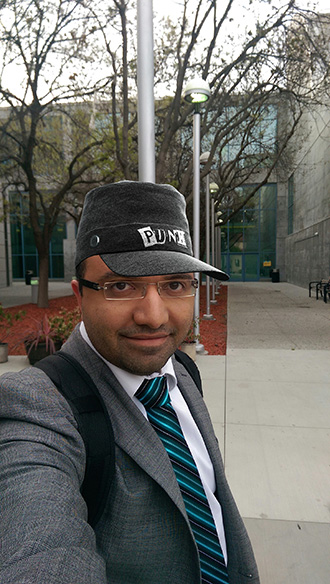 |
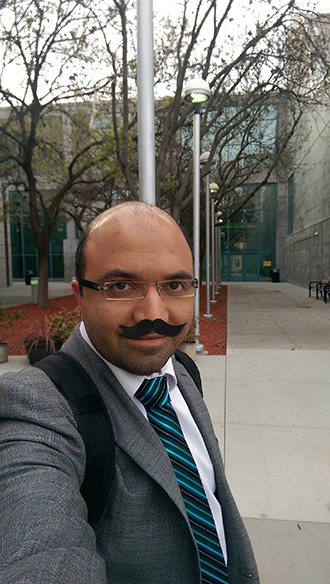 |
Copy and paste lets you quickly copy a person from one image and paste him/her into another. Even here, HTC is using the depth information captured from the secondary sensor to quickly separate the subject from the background. Typically these types of functions involve the user manually selecting the area of interest, here HTC is using the second sensor and a bunch of compute to do that for you. In practice even HTC’s Duo Cam approach requires user intervention, but not a ton if you’re fine with sharing an unpolished image. I figure many of these effects have pretty high comedic value, so something that’s a little less polished likely isn’t a problem.
Applying any of the Duo Cam effects is non destructive to the source image. You can cancel at any time, and hitting save creates a copy of the image - the original always remains intact (images with effects just get a numerical suffix e.g. _2).
There are a number of situations where Duo Cam won’t work. If you cover up the secondary sensor you’ll get a warning, but you’re still able to take shots. I’ve found the secondary sensor is pretty sensitive to things even partially occluding the image. The less obvious situations where Duo Cam disables itself automatically make sense when you think about the architecture of the setup.
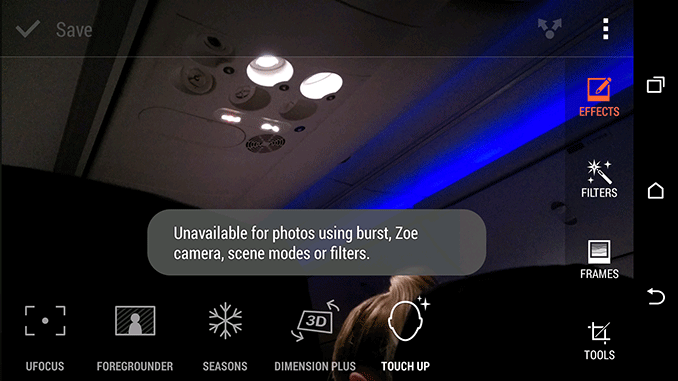
Very low light and macro photography both disable Duo Cam. In the former case you’re dealing with a fairly small 1080p sensor that likely becomes useless as noise levels rise. In the latter case, there’s just nothing left for the secondary sensor to do. Burst mode also disables the second sensor, probably because all of the ISP’s bandwidth is being used for delivering throughput for the primary sensor and can’t be split between the two. Dual capture (front + primary rear sensors in tandem) disables Duo Cam, probably for the same ISP limitations. Finally, Duo Cam also won’t work if the flash fires.
I can see many of the Duo Cam effects being fun things to play around with. I originally wrote them off pretty early on, but just in writing this section alone I can see them resonating very well with some users. They are fun. The good news is that most of the Duo Cam effects can be shared as simple JPEGs or videos with anyone, the bad news is they don’t really do much to further improve image quality. And ultimately that’s one of the biggest challenges with using the M8 to further increase marketshare at the high end.


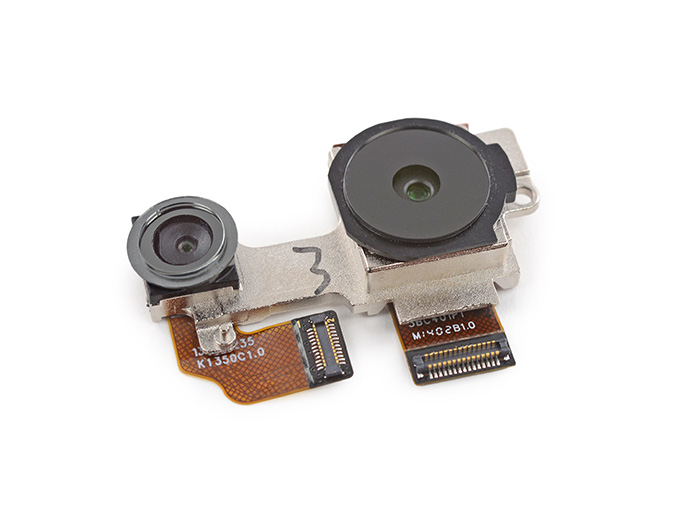

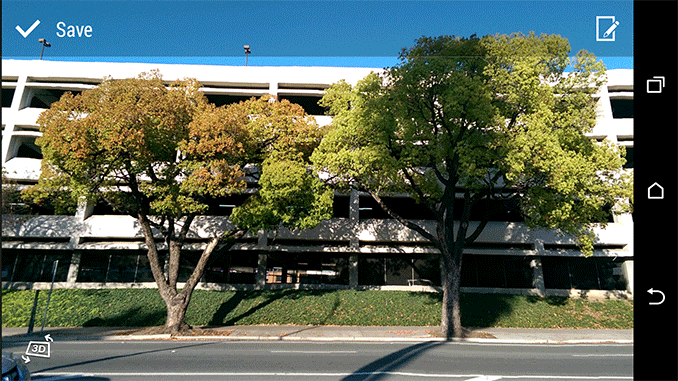








222 Comments
View All Comments
HangFire - Thursday, March 27, 2014 - link
The problem with creating an "absolute best" (in all respects) phone is time-to-market; by the time you get all the top-of-the-line components sorted out, it's obsolete in some way, a competitor just bested one aspect or another.deskjob - Thursday, March 27, 2014 - link
I agree that the M8's camera is less than ideal. I personally would've taken OIS over the second sensor. If I had my pick - a 8MP @ 2um with OIS, and they can throw in the second sensor if there's room.That being said, I think you have to keep in mind, a big chunk of photos taken with phones are strictly shared digitally, and most likely via social networking sites. I have never printed out a photo taken with my phone. I make sure to have a "real" camera, whether a decent pocket or DSLR, for those situations where photo quality really matters.
Of course it all boils down to each person's unique priorities. And again, I agree they should have gone up to a 8MP main shooter @ 2um. The current 4MP doesn't not leave much spatial resolution for down-sampling.
HangFire - Friday, March 28, 2014 - link
Thinking about it, 8MP @ 2uM might require more focal length and glass then the phone's profile would allow, and I don't want to carry one of those big ugly phone/cam hybrids like Samsung and Sony have made. Nokia has shown us how it's done. I don't care exactly what the MegalPixel count or sensor size is. I just want a cam that takes a really good pic within 1/4 second of being triggered, on a flagship phone.itsthesun - Thursday, March 27, 2014 - link
OK guys whatever about this phone... Where is Briankevith - Thursday, March 27, 2014 - link
Great review!One question: Is the camera lens still covered with a soft plastic, that will scratch very easiy?
Taracta - Thursday, March 27, 2014 - link
Anand,How about a running (side) list of the cellular bands that carriers support, not just what the phones support, in each of your reviews?
We would like to see the bands that the carriers uses and whether they support carrier aggregation (CA) where applicable and compare that to what the phones actually support and whether all feature of the carriers are implemented or just some. There could also be times where carriers add additional bands which could make a difference in buying decisions.
jk1 - Thursday, March 27, 2014 - link
people have different priorities in choosing a device. for me, i care about call quality both incoming and outgoing [not addressed], sound quality as a music player to headphones- choice of dac, fidelity of output [not addressed]. and i'd prefer a replaceable battery and the ability to use a micro sd card. [specified in the review]. then comes input options: ocr for documents or for handwriting for a note-type device.the review seemed to be mostly about the camera and - essentially- the phone's ability to play games. and of course, it's ability to make android users look almost as fashionable as apple users.
when i care about pictures i use a real camera- it produces better output than any phone camera. i don't play games. and i don't think of my phone as a fashion statement. thus the review left out the content that would have been most valuable to me.
JacksonSparks - Thursday, March 27, 2014 - link
This is a depressing comment. In summary, booooo.evonitzer - Saturday, March 29, 2014 - link
God I wish there was upvoting on Anandtech comments. +1I leave my phone in my pocket, get dirt in my pocket, and then have to meticulously clean my phone off, none of which was addressed in this review. Why do I even go on living?
sevenmack - Wednesday, April 2, 2014 - link
I understand your point, jk1. From where I sit, camera and build quality are both important. But not so important that other matters -- including call quality, and sound quality as a music player -- are rendered unimportant. A top-notch review should cover all of those issues, and this one doesn't; I would also say the same for reviews of the M8 by Anandtech's competing sites.Based on my own handling of the M8, the phone actually does well on all those counts. The call quality is actually quite solid, and the sound quality is more than good enough for audiophiles; like the M7, the M8 can also play lossless audio such as FLAC and does so well. The BoomSound speakers do the job and this generation's version is louder than that on the M7. But put in your Audio-Technica ATH-M50x headsets and the sound is sublime, as good as you can get on a smartphone.
The camera? Not perfect, but it is also better than most reviewers will admit; the big problem has more to do with the inability of many users to do something as simple as adjust settings than with pixel counts. If pro shutterbugs such as Colby Brown think the M8 is good enough for their work, then the rest of us should stop carping. And the phone is definitely nice to hold; even though it is longer than the M7, it is still easy to handle with one hand. You don't need to worry much about getting it dirty or scratched.